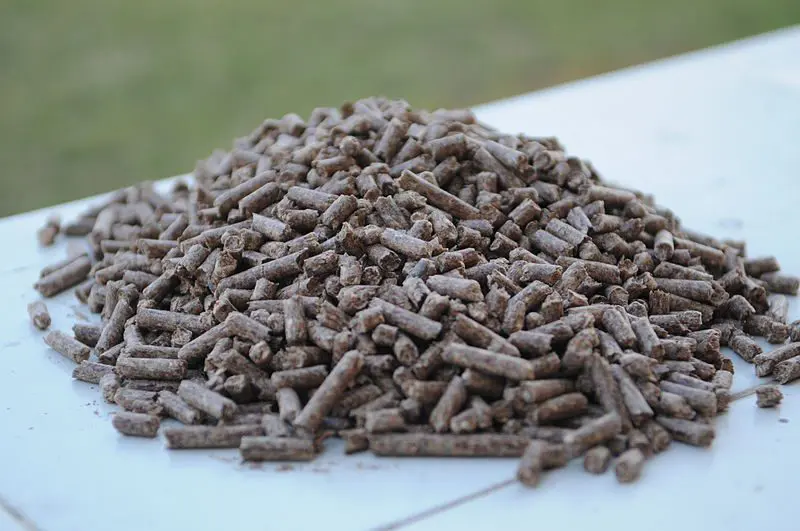It is no surprise that the fashion industry is still one of the most polluting industries globally, releasing 2.1 billion tons of GHG emissions per year.
In 2018, the launch of the Fashion Industry Charter for Climate Action provided a promising avenue for holding the fashion industry accountable for reducing emissions. This Charter outlined several key goals, such as a 30% reduction in GHG emissions by 2030 and getting to net-zero emissions by 2050. It also called on brands to support the transition away from the use of fossil fuels in their supply chains, in favour of renewable energy by 2030.
Five years after the launch of the Charter, the fashion industry is not meeting the targets needed to limit global heating to 1.5 degrees Celsius. The transition to renewable sources in brands’ supply chains is a slow one and unfortunately, this transition appears to be relying heavily on the use of biomass energy, which has been touted as renewable and sustainable, despite evidence to the contrary. Biomass energy can come from several sources such as wood chips, sawdust, agricultural waste and animal manure. Of all the different types of biomass, solid biomass from forests is currently the most widely used for energy production.
An example of an apparel company using biomass energy is Gildan. The company generates almost half of its energy needs by burning agricultural, factory, and process waste such as wood by-products, paper, and cotton waste in high-efficiency boilers to produce steam and thermal energy for their textile factories.
The environmental impact of biomass energy depends on a variety of factors, such as the type of biomass source, the energy conversion method and the scale of operation. For biomass energy to be beneficial, the right sources and methods must be used and converted to energy at an appropriate local scale. For example, smaller farms can use anaerobic digesters (a sealed, oxygen-free tank) to turn livestock manure into biogas, which reduces methane emissions and generates heat and power while returning nutrients to the soil. Another example is using agricultural waste such as cotton stalks. Instead of farmers burning it in the fields to clear out the waste, it is used as fuel in a biomass boiler to generate electricity. However, the conversion of agricultural waste into energy still faces challenges, such as the need to develop an economical way of treating toxic pollutants produced during the energy conversion process.

One concern of biomass energy within the climate action community is the reliance on woody biomass as a renewable energy source. The wide-scale operation of sourcing wood and the conversion process has negatively impacted the environment and vulnerable communities.
When you look at the evidence, there are two major reasons why woody biomass energy shouldn’t be used as a renewable energy solution:
- It’s a false solution
Woody biomass is often labeled as a “renewable” energy source, even though it has more similarities with fossil fuels. Not only does it emit a significant amount of GHG emissions, but it can also exceed the levels of pollutants released by fossil fuels. This is especially concerning when we consider the impact on vulnerable communities, whose livelihoods and rights are threatened by deforestation, loss of biodiversity and reduced water and air quality. Woody biomass energy simply isn’t an environmentally friendly option and should not qualify as a circular or regenerative energy solution.
- It’s not carbon neutral and causes a carbon debt
A carbon-neutral energy source means there is a balance of carbon emissions and absorption from the atmosphere through carbon sinks. Burning biomass involves the combustion of organic matter and emits CO2 into the atmosphere, but it lacks the time between replanting and regeneration to make burning biomass carbon neutral. Research has shown that it will take decades, or even centuries for newly planted trees to absorb the amount of carbon released by burning biomass, creating a carbon debt.
In February 2021, around 500 scientists signed a letter sent to several world leaders urging the government to end subsidies for relying on burning wood as a renewable energy solution, flagging the fact that biomass subsidies only serve to benefit the wood pellet industry and harm the environment. They stated that burning wood creates a double climate problem since companies are shifting towards this misguided solution instead of transitioning to 100% real carbon reduction solutions, such as solar and wind energy sources.
It is crucial for governments and industries like the fashion industry to heed the mounting evidence and re-evaluate their classification of woody biomass as a carbon-neutral or low-carbon energy source. Despite the urgent need for action, in 2022 the EU voted to keep the classification that woody biomass is renewable energy and other governments have not made any amendments as well. If we continue to support woody biomass as a renewable energy alternative, it will only lead to irreparable harm to our planet, with far-reaching consequences for generations to come. Ultimately, when considering the implementation of large-scale renewable energy solutions, biomass sources have limitations. For that reason, there needs to be a focus on accurate carbon accounting and prioritizing alternative energy sources like solar and wind.

